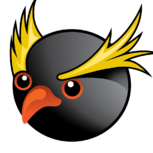[1.12.2] Retrieving the pixel data for a block's texture
-
Recently Browsing
- No registered users viewing this page.
-
Posts
-
By l_OverLord_l · Posted
sure, here's the link, I hope I did what you wrote about, I just didn't quite understand you ( ._.) https://paste.ee/p/ZXHKZ -
By Phantom0101919 · Posted
Keep this post up just in case but I'm using the curseforge launcher and it's working IM SOO HAPPY -
Post logs as per https://forums.minecraftforge.net/topic/125488-rules-and-frequently-asked-questions-faq/ They may have information that will answer these questions.
-
By Gabrieldavis · Posted
I was left reeling when a glitch on a cryptocurrency exchange caused me to lose $166,000 worth of my hard-earned savings. It felt like my entire world had crumbled in the blink of an eye, leaving me with a sense of hopelessness. Determined not to give up, I delved into research on recovery options, unsure of what to expect. That's when I stumbled upon I was left reeling when a glitch on a cryptocurrency exchange caused me to lose $166,000 worth of my hard-earned savings. It felt like my entire world had crumbled in the blink of an eye, leaving me with a sense of hopelessness. Determined not to give up, I delved into research on recovery options, unsure of what to expect. That's when I stumbled upon DIGITAL HACK RECOVERY, a beacon of hope in my darkest hour. Despite my initial doubts, I decided to take a leap of faith and give them a shot as a final lifeline. The experts at DIGITAL HACK RECOVERY proved to be masters of their craft, guiding me through their exclusive process with precision and expertise. Utilizing cutting-edge blockchain analysis methods, they were able to track down the elusive trail of my missing funds and identify the exact point of failure. Their forensic talents were unparalleled as they tirelessly combed through the intricate web of blockchain data to locate my cryptocurrency. With each step they took, they kept me informed of their progress, never wavering in their belief that my funds could be rescued. After several painstaking weeks, DIGITAL HACK RECOVERY finally located and restored my $166,000 worth of cryptocurrency. I was awestruck that they were able to salvage what I had thought was lost forever. The whole experience restored my faith in the crypto space and proved that even in the worst situations, recovery is possible with the right experts on your side. I will be forever grateful to DIGITAL HACK RECOVERY for giving me back my life savings when I needed it most. Their tireless efforts and technical mastery turned what could have been a devastating loss into an uplifting success story. Book a time with DIGITAL HACK RECOVERY through: digital hack recovery @ techie . com & +12018871705
-
Topics
-
Who's Online (See full list)




Recommended Posts
Join the conversation
You can post now and register later. If you have an account, sign in now to post with your account.
Note: Your post will require moderator approval before it will be visible.